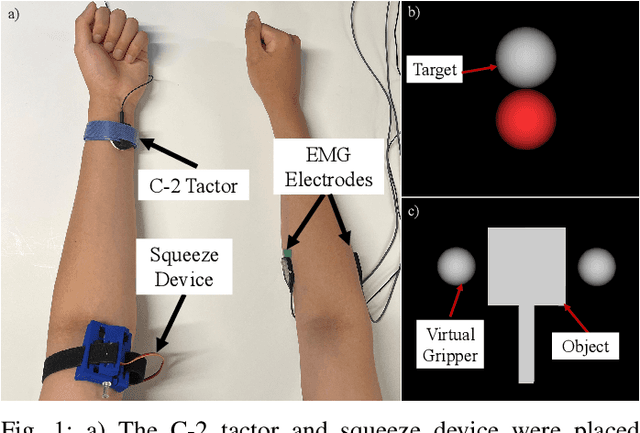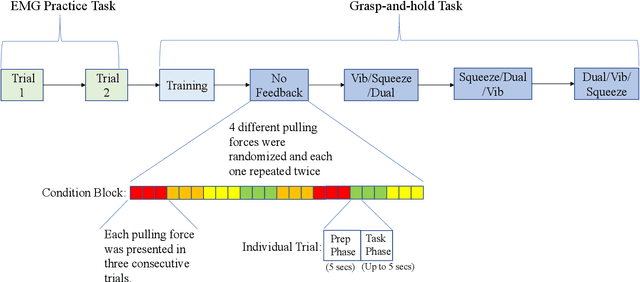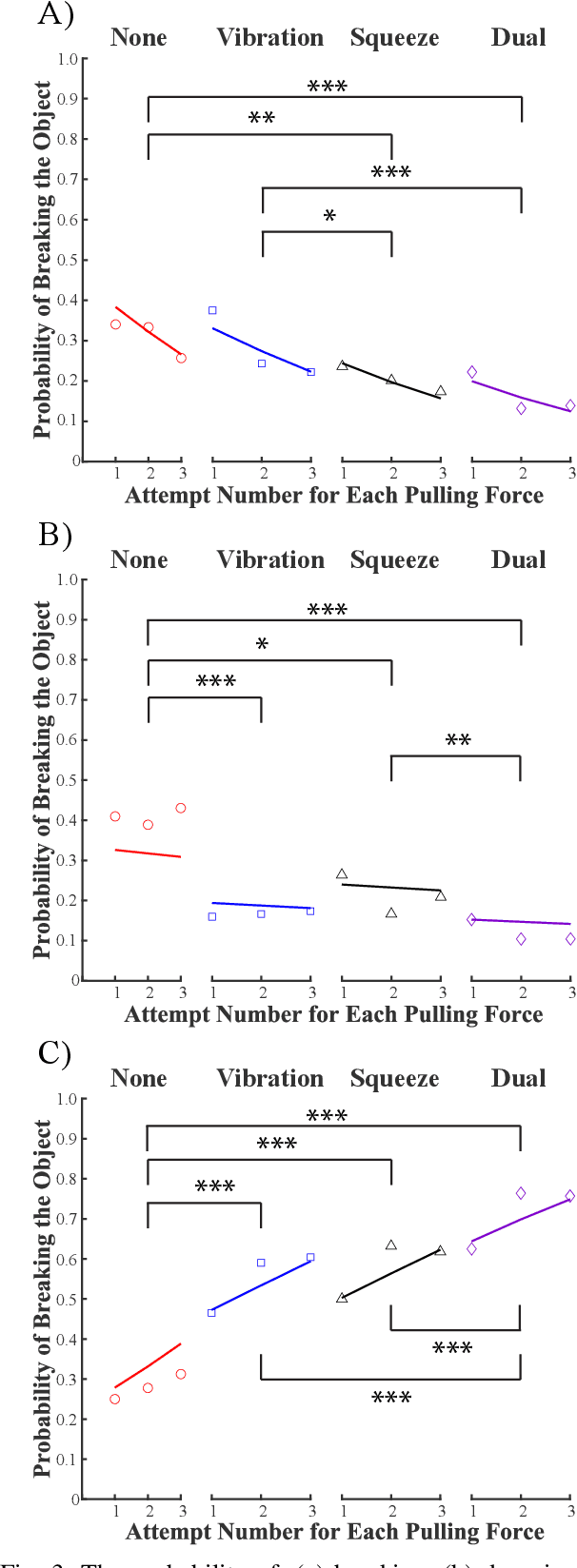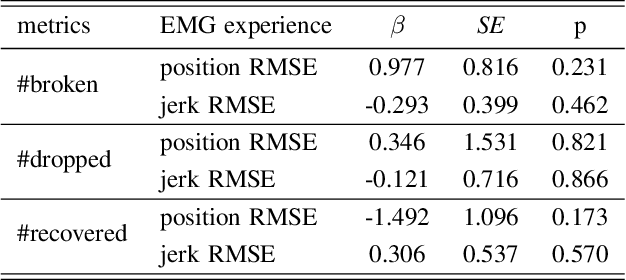Kezi Li
Dual-Modality Haptic Feedback Improves Dexterous Task Execution with Virtual EMG-Controlled Gripper
Sep 30, 2022



Abstract:Upper-extremity amputees who use myoelectric prostheses currently lack the haptic sensory information needed to perform dexterous activities of daily living. While considerable research has focused on restoring this haptic information, these approaches often rely on single-modality feedback schemes which are necessary but insufficient for the feedforward and feedback control strategies employed by the central nervous system. Multi-modality feedback approaches have been gaining attention in several application domains, however, the utility for myoelectric prosthesis use remains unclear. In this study, we investigated the utility of dual-modality haptic feedback in a virtual EMG-controlled grasp-and-hold task with a brittle object and variable load force. We recruited N=20 non-amputee participants to perform the task in four conditions: no feedback, vibration feedback of incipient slip, squeezing feedback of grip force, and dual (vibration + squeezing) feedback of incipient slip and grip force. Results suggest that receiving any feedback is better than receiving none, however, dual-modality feedback is far superior to either single-modality feedback approach in terms of preventing the object from breaking or dropping, even after it started slipping. Control with dual-modality feedback was also seen as more intuitive than with either of the single-modality feedback approaches.
 Add to Chrome
Add to Chrome Add to Firefox
Add to Firefox Add to Edge
Add to Edge